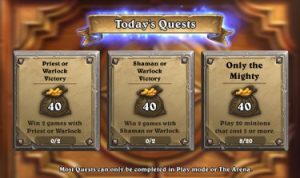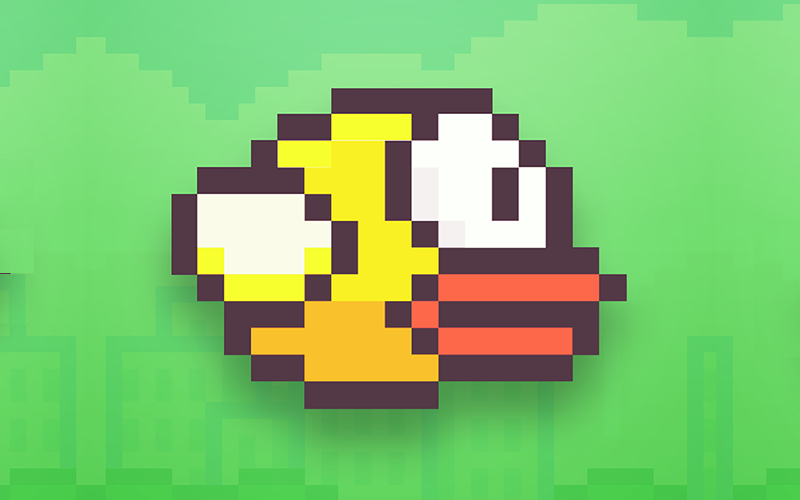Top 10 Game Mechanics for Hyper Casual Games
When coming up with new game ideas, you often want to look around you for inspiration. Most great games are often a merging of two mechanics with a twist of innovation. I like to use the 90/10 rule. Stick with 90% what you know and try to create a 10% twist. As I mentioned in the Voodoo article, Voodoo doesn’t care about your game design, they care about the market’s perception of your game design. For them whichever game succeeds is how they will grow, but for game developers, history is a valuable teacher and seeing what worked in the past can help in the future.
Here’s a breakdown of the current top 10 game mechanics for hyper casual gaming on the app store and what to remember when building a game using them.
You might also enjoy our follow up article to this, in our Top 7 Idle Game Mechanics article.
Tap / Timing Mechanics

Tap and Timing games are the most popular form of mechanics for hyper casual games. Most of the other mechanics use tapping or timing as an input method for their particular gameplay. In a game that is pure tap and timing gameplay, the mechanic relies upon an exact tap or an exact timing. Precision is the most important aspect of the action and the focus for the user is perfection. Only the perfect tap will bring the maximum score. The rest of the games feel and creativity relies on exploiting small inaccuracies in the tap to reduce the player’s ability to win, usually in the form of a high score. The game Baseball Boy by Voodoo focus’ a players attention on a single baseball bat hit as the only action the player has. Every hit is exhilarating, but the perfect hit is dramatically better.
When thinking of tap and timing mechanics you must strip away any external or confusing factors for the player and provide a clear visual objective for a player to achieve. Visual feedback is extremely important here with a clear representation of a bad shot, but also a large positive reinforcement for the Perfect Shot. The clearer the goal, and the harder the perfect shot, the more fun it is when you hit it.
Stacking Mechanics
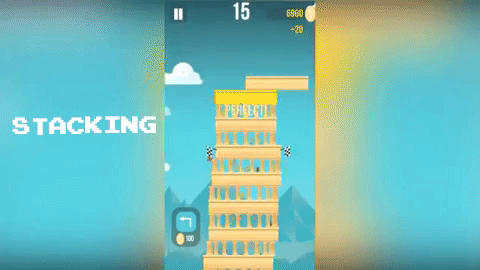
Stacking mechanics take the tap/timing mechanic further by adding your previous taps outcome to the progress of the round. The game The Tower by Ketchapp is a good example where the Tower itself is made up of the previously stacked squares. Every time a player fails to get a perfect stack, the tower itself shrinks, making it harder and smaller for the next stack.
Stacking mechanics provide more points of failure for the players, with each failure having a smaller effect than a Pure Tap game. They soften the failure by allowing you to continue, but they maintain the clear visual clarity of how that failure occurred. The less punishing failure the longer the round, but long rounds also signify a sense of ease.
When thinking how to design with a stack game in mind, make sure players have enough points of failure (5-10) before you end the round, but make sure the difficulty is hard enough that players get non-perfect timings at least 20-40% of the time. Too few points of failure the game is too hard and too many perfect timings the game is too easy.
Turning Mechanics

Turning is the last of the tap and timing themed mechanics. It adds a further complication to each tap by adding a confusing visual perception. Humans visual cortex has an in built weakness at judging lengths between horizontal and vertical shapes in a 3D space. The visual cortex can be tricked quite easily and many visual illusions demonstrate it, The Ponzo Illusion, is a good example. As a designer you’re still only asking the player to time a single tap but with the added confusion of the 3D space players are more likely to get this wrong. This is much harder to master than the 2D Stack-based approach.
Good turning based gameplay is usually more forgiving than stack-based gameplay, resetting the player more frequently and letting them get back into a perfect streak even after making mistakes. As a designer you want your players to make clear mistakes that end in failure, the more obvious those mistakes the less frustrated a player becomes. Turning games also work best when the angles are 90 degrees or repeating sharp angles, simply because the brain can learn to overcome it’s own weakness, through trial and error! You must be more lenient than other hypercasual game mechanics because people simply don’t believe their own eyes! Oh the power of the mind 👀
Dexterity Mechanics
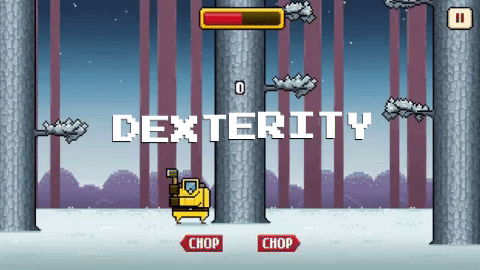
These games mainly focus on a player having a very simple and repeating action that they must perform many hundreds of times. With enough practice, these mechanics can be mastered by dextrous players and so the highest score is a fair representation of dexterity and skill. For these games to be fun the game must usually speed up, taking a mechanic that might be easy to slowly, but when pressurised by a time becomes more and more likely you will make a mistake.
You still need a clear hard limit to success usually a single life or single mistake ends the round and you start from the beginning. Timberman by Digital Melody is a great example of taking a player’s full attention, timing and dexterity to create a challenging points based challenge. When designing these sort of games you must make sure the controls and input sensitivity is the highest priority. There can be no lag and no grey areas, a players action will directly affect the character immediately. A player will be inputting many hundreds of taps per round, each tap must be accurate for it to be fun, any inaccuracies or lag are multiplied by the number of times you input it.
Rising / Falling Mechanics

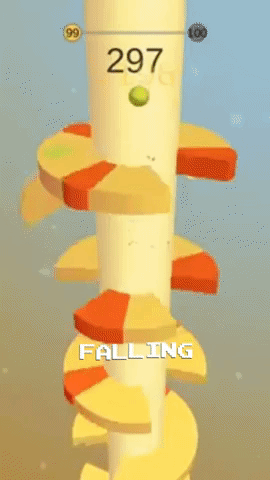
——
Rising and falling mechanics provide interesting journeys for their players. The constant progression of the level leads to the feeling of progression without a change in the mechanic or goal. To keep people entertained the level itself must develop. Rise Up by Serkan Özyılmaz and Helix Jump by Voodoo show how progression develops as you traverse up or down the game.
The player’s focus is on dealing with the next challenge along the progression and less about accuracy. There are many ways to win these levels, a little luck is often needed over timing or skill. Your only goal is to protect an object from a single point of failure.
The journey develops pressurising environments and the players end up creating lots of self-inflicted problems. Small issues early on can cause much harder moves later. Good design here focus’ on players have 1 or possibly 2 problems to deal with at a time, but the nature of the problem changes as you rise or fall through the gameplay. Try to think in stages and work on each stage being fun on it’s own, adding them together creates the dynamic journey.
Swerve Mechanics
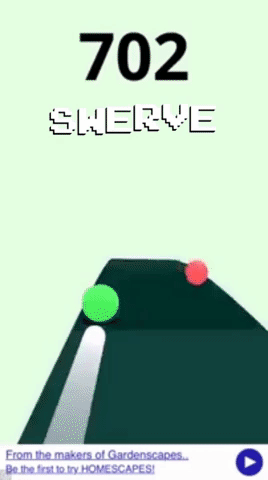
The final arcade based hypercasual mechanic is the swerve mechanic. These games focus on using the drag of a finger to avoid obstacles. Most of the time they are avoidance based mechanics in a similar vein to rising and falling, but they also focus more on dexterity than timing. Swerve games maximise the touch screen controls and are hard to recreate on other devices. This gives them an original feeling and a cool use of touch inputs.
What’s important here is that the game focus’ on a player accuracy of input from dragging and sweeping a finger, rather than timing a tap. The size of the object, the speed of the object has a big effect on what people are able to do with their fingers.
In the same way, as dextrous games focus on removing inaccuracies, swerve games need to focus on the input feel of your finger. Players will play for longer if the game feels fun and the near misses feel, super near. Work on making the game reward players for near misses and replay their errors to show just how close they were to almost avoiding death to make the game more fun.
Merging Mechanics

Merging mechanics are very easy for players to understand. Similar things combine, different things don’t. The game then becomes very easy for people to get right and with each subsequent merge, a new piece of understanding and a strong sense of progression is conveyed to players. Complexity and challenge in this game usually come in the form of a metagame, something that non-casual games rely on, but for the casual audience, the metagame can be divisive, making the game too complex and turning people away from playing.
Merge games do well because the metagame is incorporated into the main game. The mechanic is very visual and you can see how your action is causing the merged units to be different from one another. For a merging game to be successful, don’t break the golden rule, embrace the golden rule – Similar things combine, different things don’t. You then need to make merging feel fun, animate, excite and surprise players with each new find. The clear sense of progression along with the ever-increasing challenge, due to exponential growth, of merging to the next stage will keep people playing for longer.
Idle Mechanics

Idle as a mechanic has been used in hyper casual to mid-core games for a number of years. The complexity and reliance on the mechanic is a choice by each game designer. At its core, it is any mechanic that doesn’t require input from a player in order to progress. Obviously, no input at all is a very casual experience, but also one that without an objective becomes boring. Most of the time idle mechanics form a secondary mechanic attached to a soft currency. This works well because over time players earn more money which they can spend in their core game experience.
Adventure Capitalist by Hyper Hippo made the idle mechanic the core focus of the gameplay and built a game around repeating the mechanic with different growth rates. It became successful because of the interplay between the rates and the addition of ascension mechanics which force a player to lose all of their progress in the current game for increase speed of progress in the next game.
For idle mechanics to be fun, they need to be balanced. The biggest issue with the genre is bad maths. Either the game reaches incredibly hard to overcome peaks of progress or totally boring plateaus of progression where the numbers and growth mean nothing in the real game. Be careful and make sure you use your excel skills to their max if you want to rely on idle mechanics.
Growing Mechanics
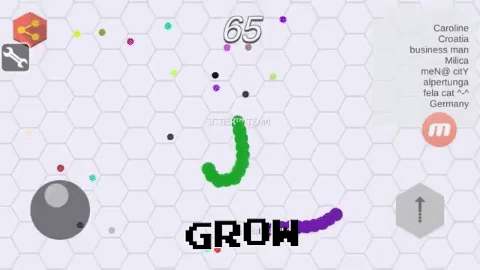
Growing mechanics are very similar to idle mechanics in that they are usually independent of the core control input but do form the core gameplay objective. Winners in this hyper casual genre are always the largest and in some cases can eat other players, in essence ending a round. The gameplay mechanics themselves are very clear, yet developing a fun experience and one that scales is reasonably difficult for this genre.
You need to think a lot about player density when designing games that grow. Obviously, all players want to grow, but not all can. Starting the correct number of players in the correct space and with the correct amount of food is what makes this genre fun. These games also become exponentially more fun with other real people playing them and have so far formed the .io genre on the store. The number of fitting gameplay mechanics for this genre is limited but the games have a longer lifespan than other hypercasual games because of the interactions with other players.
Puzzle Mechanics

Puzzle is a genre in itself, but hyper casual puzzle games focus on simplicity rather than complexity. A good hyper casual puzzle game usually has no end. Players are simply asked to continue to play the puzzle for as long as possible and the game will not increase the difficulty. The mechanic itself must grow in complexity via the users’ actions. Good examples are 1010! By Gram Games or 2048 by Ketchapp. In both cases, the puzzle rules are set at the beginning and the board develops as you play. Unlike other board games such as Chess or Chequers which have clear end goals, hypercasual puzzle games usually have no clear end and it’s simply a case of lasting as long as you can.
These are the hardest genre of hypercasual games to develop because they are usually very clear and defined mechanics that are unique to the game itself. This is because it is very hard to create a mechanic that over time doesn’t change the gameboard into something that is too easy or too hard. Board Games are usually a great place to look for tried and tested mechanics, but make sure you chose ones that require very few rules otherwise you will lose your audience in the explanation.
Please share in the comments if you feel there are any other hyper casual game mechanics worth mentioning or any other hyper casual games ideas that you like and we’ll update the article!




